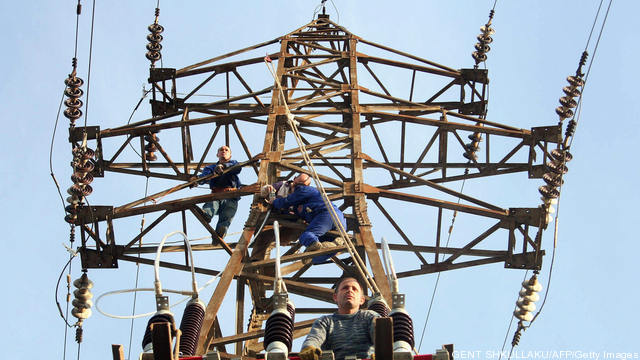Innovation and new technology are highly valued among wastewater utilities, and these tools can be implemented if performance can be demonstrated through pilots or other testing. But several factors are holding back utilities from fully embracing these advancements – available capital, lack of technical understanding and a perceived apathy at the upper levels of the organization.
According to the 2015 Strategic Directions: U.S. Water Utilities report, many utilities are confident new technologies can reduce energy costs and deliver more efficient systems, but they either lack the leadership support necessary to adopt the technology or believe the advancements are too expensive or won’t integrate well with existing systems.
“The result may be a utility that misses opportunities to shore up limited capital during an already challenging time for wastewater utilities,” said Julia Gass, Lead Process Mechanical Engineer for Black & Veatch’s water business.
For smaller utilities, a lack of knowledge about available technology was rated as a significantly higher barrier to technological innovation. Among utilities serving populations up to 1 million people, lack of funds and the perception that new technologies remain unproven were seen as the tallest barriers to entry.
Utility engineers tended to agree that proof-of-concept concerns were sidelining upgrades in their organizations. However, 43 percent of engineers surveyed also saw lacking engagement from utility leadership as a barrier to adopting new technologies.
“The notion that many technologies remain unproven is often a signal that utilities would rather let other organizations provide the base case,” Gass said. “But this suggestion by engineers that innovation lacks institutional support signals the potential for a systemwide stagnancy that can keep organizations from implementing cost reduction and resource-recovery initiatives.”
Wastewater Treatment – A Power Hog
Wastewater treatment is a huge cost center for utilities, led by aeration blowers. Energy needs for blowers dwarf the power required for pumps, lighting, clarifiers and other equipment. Aeration blowers are a candidate for energy efficiency efforts due to the many new blower technologies on the market. Despite the aeration system’s outsized energy requirements, system upgrades and control valve replacement were ranked as surprisingly low priorities for wastewater treatment facilities, according to the report.
Among smaller utilities, a quarter of respondents said they were not considering valve replacement or control upgrades as an energy efficiency strategy, and about one-third said they didn’t know of such plans. That number jumps to nearly 60 percent among wastewater utilities serving populations of 1 million or more, a potentially troublesome data point considering the problems of aging or outdated water infrastructure in many major U.S. cities.
“Such energy efficiency moves can reduce the amount of energy required for production, which demands water,” Gass said. “For water-stressed regions, reducing energy demand can support stretching a limited water supply. Therefore, these upgrades are an opportunity for cost savings.”
Multiple valve solutions exist on the market, and Gass said utilities should explore their potential. In many cases, new valves can return their investment costs within five years, she noted.
“Large plants could see significant savings with an investment in updated most open valve (MOV) controls,” Gass said. “Such replacements offer a high-return solution that doesn’t require a complete overhaul of an existing asset.”
Though capital costs are an inhibitor, assistance may be possible through electric utility rebates and energy performance contracts (EPCs). EPCs involve third-party financing that uses money saved through reduced energy consumption to repay the cost of installing more energy efficient equipment.
Energy Recovery from Wastewater
Wastewater holds nearly five times the energy required to treat it, according to the Water Environment Research Foundation. Recent studies suggest that energy recovered from wastewater biosolids could be enough to meet up to 12 percent of domestic electricity demand in the United States.
Currently, 5.2 percent of survey respondents said their utility was energy neutral or positive, and another 18 percent said they are making such plans, although most indicated those plans were at least a decade away. Nearly 60 percent of respondents said they have no plans to become energy neutral or positive.
“This suggests a sizable number of wastewater treatment plants are passing up these potential gains,” Gass said.
Regardless of size and scope, Gass said she believes the success of any effort to improve energy efficiency depends on the full engagement of an organization’s leadership.
“Utility executives must explore these and other avenues at a time when supply is increasingly constrained by climate and aging systems.”
Published originally on Black & Veatch Solutions

